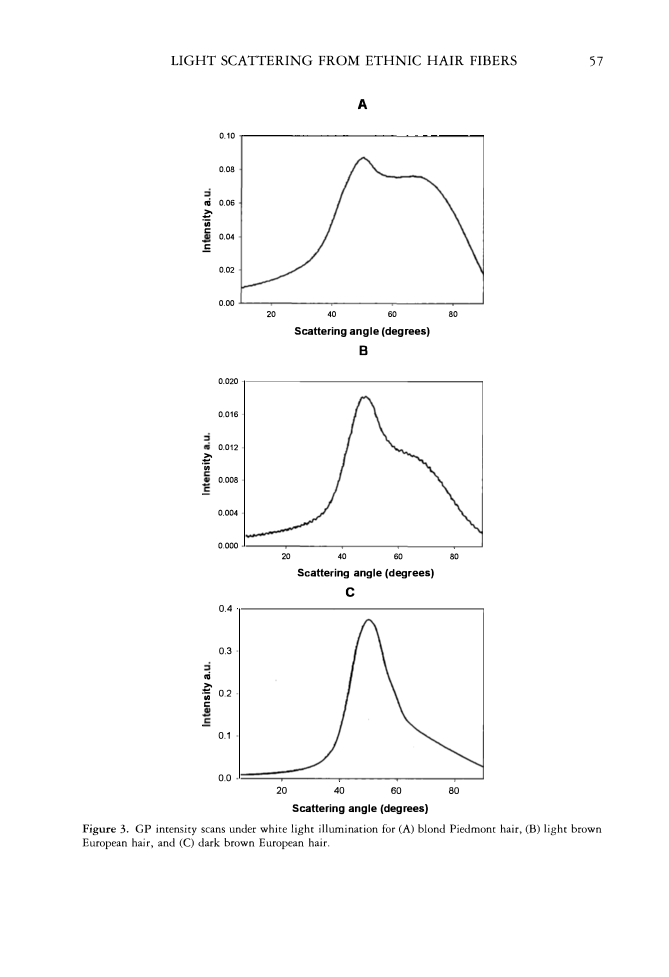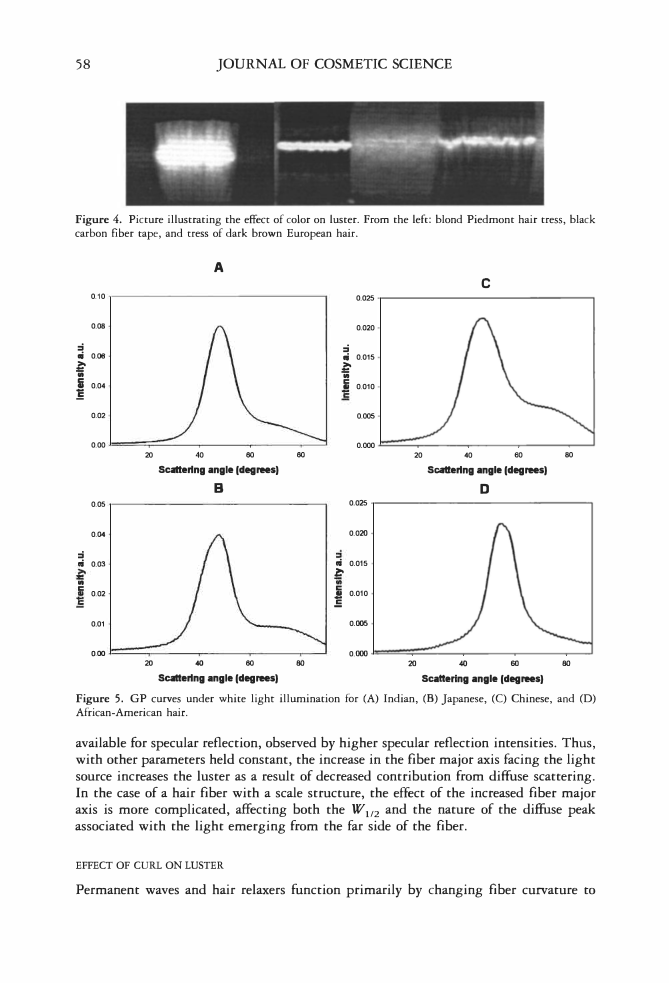LIGHT SCATTERING FROM ETHNIC HAIR FIBERS 57 A 0.10 0.08 cu 0.06 � 'iii C: 0.04 .E 0.02 0.00 20 40 60 80 Scattering angle (degrees) B 0.020 0.016 0.012 � 'iii 0.008 0.004 0.000 20 40 60 80 Scattering angle (degrees) C 0.4 0.3 cu � 0.2 'iii C: 0.1 0.0 20 40 60 80 Scattering angle (degrees) Figure 3. GP intensity scans under white light illumination for (A) blond Piedmont hair, (B) light brown European hair, and (C) dark brown European hair.
58 JOURNAL OF COSMETIC SCIENCE Figure 4. Picture illustrating the effect of color on luster. From the left: blond Piedmont hair tress, black carbon fiber tape, and tress of dark brown European hair. A C 0.10 0.025 0.08 0.020 :::i :::i • 0.06 • 0.015 � � In Ill ii 0.04 C 0.010 B .!! 0.02 0.005 0.00 0.000 20 40 60 60 20 40 60 80 Scattering angle (degrees) Scattering angle (degrees) B D 0.05 0.025 0.04 0.020 :::i l'i 0.03 l'i 0.015 � Ill C C 0.02 .!! 0.010 .5 0.01 0.005 0.00 0.000 20 40 60 80 20 40 60 80 Scattering angle (degrees) Scattering angle (degrees) Figure 5. GP curves under white light illumination for (A) Indian, (B) Japanese, (C) Chinese, and (D) African-American hair. available for specular reflection, observed by higher specular reflection intensities. Thus, with other parameters held constant, the increase in the fiber major axis facing the light source increases the luster as a result of decreased contribution from diffuse scattering. In the case of a hair fiber with a scale structure, the effect of the increased fiber major axis is more complicated, affecting both the W112 and the nature of the diffuse peak associated with the light emerging from the far side of the fiber. EFFECT OF CURL ON LUSTER Permanent waves and hair relaxers function primarily by changing fiber curvature to
Purchased for the exclusive use of nofirst nolast (unknown) From: SCC Media Library & Resource Center (library.scconline.org)





































































































































